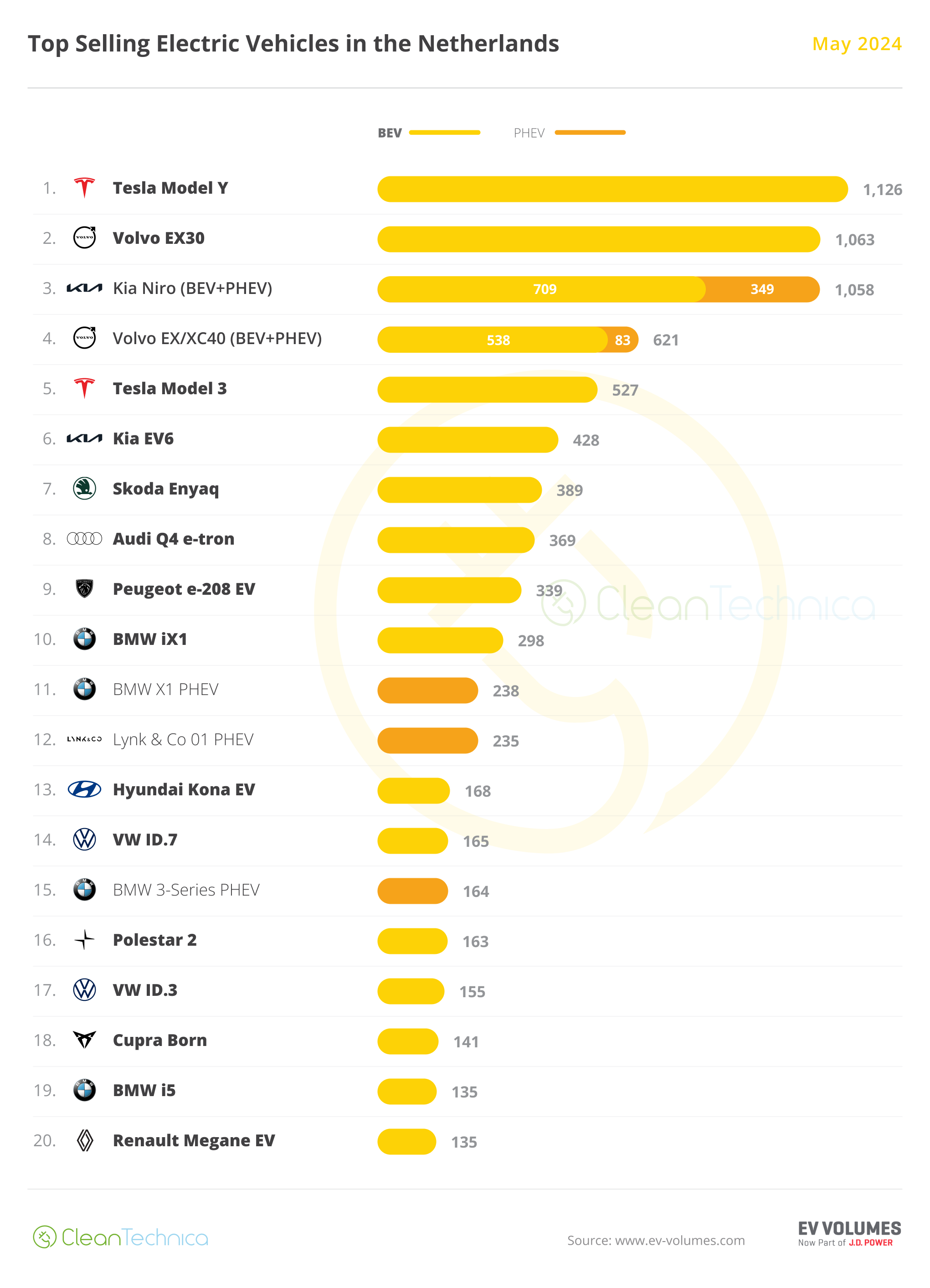Sign up for daily news updates from CleanTechnica on email. Or follow us on Google News!
The Three New Wind Energy Reports Highlight Industry Development, Expansion, and the Policies and Incentives Driving Wind Energy Forward
WASHINGTON, D.C. — Over the past year, the U.S. wind energy sector showcased its resilience and potential, as detailed in the 2024 editions of the annual market reports released today by the U.S. Department of Energy (DOE). The reports find that the passage of the Inflation Reduction Act (IRA) has led to significant increases in near-term wind deployment forecasts and has motivated billions of dollars of investment in the domestic wind supply chain, despite ongoing challenges that the industry is navigating. Under President Biden and Vice President Harris’ leadership last year, wind power provided more than 10% of U.S. electricity and accounted for 12% of new electricity capacity, representing $10.8 billion in capital investment and supporting more than 125,000 American jobs. As one of the most cost-effective sources of electricity in America, wind energy is well-positioned for future growth.
“The United States is committed to investing in technologies to accelerate the deployment of wind energy and bring more renewable electricity onto the grid,” said Eric Lantz, director, Wind Energy Technologies Office “DOE will continue collaborating with partners and stakeholders nationwide to advance the industry and propel our nation toward a cleaner, more secure and resilient energy future for all Americans.”
Near-term forecasts for wind energy have increased by over 30% in the wake of the IRA’s passage, with growth expected to ramp up to more than 15 gigawatts (GW) per year by 2026 and to nearly 20 GW per year by the end of the decade. The IRA is also fueling supply chain expansion with 15 new, re-opened, or expanded land-based wind manufacturing facilities announced since its passage.
The reports also find significant offshore wind growth expected in the next few years, with a U.S. project pipeline that has grown by 53% from the previous year. There are projects totaling almost 6 GW of offshore wind capacity under construction, 3 GW of additional projects approved by the U.S. Department of the Interior’s Bureau of Ocean Energy Management (BOEM) that have offtake agreements and are preparing to begin construction, and more than 45 GW in state commitments.
The Land-Based Wind Market Report, prepared by DOE’s Lawrence Berkeley National Laboratory, details the nearly 6,500 megawatts (MW) of new utility-scale, land-based wind capacity added in 2023, bringing the total cumulative installed wind capacity to nearly 150,500 MW—the equivalent of powering around 45 million American homes. Key findings from the report include:
- Wind energy provided 10% of total electricity nationwide, more than 59% of electricity in Iowa, more than 55% of electricity in South Dakota, and more than 40% of electricity in Kansas and Oklahoma.
- At the end of 2023, utility-scale, land-based wind was installed in a total of 42 states, with 17 states installing new utility-scale, land-based wind turbines in 2023. Texas installed the most capacity, with 1,323 MW. Other leading states included Illinois and Kansas, with each adding more than 800 MW of capacity in 2023.
- For the second time, non-utility buyers, such as corporations, are purchasing more wind than utilities. Direct retail purchasers of wind—including corporate commitments—buy electricity from at least 48% of the new wind capacity installed in 2023.
- Wind turbines continue to grow in size and power, contributing to competitive costs and prices. The average capacity of newly installed wind turbines has grown by 23% since 2020, to 3.4 MW, while the rotor diameter—the width of the circle swept by the rotating turbine blades—has increased 7% since 2020, to 438 feet. Larger wind turbines can create more electricity by capturing more wind with their longer blades, and they benefit from the better wind resources higher above the ground.
- Wind provides public health and climate benefits by reducing emissions of carbon dioxide, nitrogen oxides, and sulfur dioxide. The health and climate benefits of wind are larger than its grid-system value, and the combination of all three is more than three times the average levelized cost of energy for wind.
The Offshore Wind Market Report, prepared by DOE’s National Renewable Energy Laboratory, shows that despite recent macroeconomic conditions and supply chain constraints, the U.S. offshore wind industry is set up to scale. The U.S. offshore wind energy project pipeline grew by 53% from the previous year to a total of 80,523 MW—enough to power more than 26 million homes if fully developed. This includes three fully operational projects totaling 174 MW, including South Fork Wind Farm, which is providing power to New York and is the United States’ first fully operational commercial-scale wind farm, and several projects under construction. Forecasts estimate that the United States could have 40 GW of offshore wind capacity installed by 2035. Other key findings from the report include:
- DOE estimates that $10 billion has been announced or invested in the U.S. offshore wind supply chain since the beginning of 2021. This figure includes $2.1 billion invested in 2023 alone.
- Eight states have procurement mandates that total more than 45 GW of offshore wind capacity by 2040.
- Floating offshore wind is becoming a larger part of the U.S. offshore wind energy pipeline and future. California now has more than 6,000 MW of estimated pipeline capacity in the site control stage from five floating offshore wind projects, and the Gulf of Maine now has an estimated pipeline total of more than 15,000 MW (if fully developed) from eight new proposed lease areas.
- As of May 2024, the U.S. offshore wind energy pipeline has 38 projects in permitting or under site control, totaling more than 42 GW, with an additional 30 GW of capacity in the planning stage of the pipeline.
- Rising interest rates, supply chain constraints, and higher commodity prices during 2021–2023 have led to higher offshore wind energy costs, but against a backdrop of longer-term reductions. Even including recent cost increases, offshore wind costs have decreased by more than 50% since 2013.
The Distributed Wind Market Report, prepared by DOE’s Pacific Northwest National Laboratory, notes that 1,999 distributed wind turbines were added across 16 states in 2023. Distributed wind turbines, which serve on-site energy demand or support operation of local electricity distribution networks, added a total 10.5 MW of new capacity in 2023, representing $37 million in new investment. Key findings from the report include:
- Cumulative U.S. distributed wind capacity stands at 1,110 MW from more than 92,000 wind turbines across all 50 states, the District of Columbia, Puerto Rico, the U.S. Virgin Islands, the Northern Mariana Islands, and Guam.
- Ohio, Illinois, and Alaska led the United States in distributed wind capacity additions in 2023, with three projects collectively representing 78% of capacity installed.
- Distributed wind is poised for deployment growth in part due to IRA funding opportunities and collaboration between DOE and the U.S. Department of Agriculture (USDA). In 2024, DOE and USDA launched the Rural Agricultural Income & Savings from Renewable Energy (RAISE) initiative to help farmers cut costs and increase income through distributed generation projects, including distributed wind. RAISE has an initial goal of helping 400 farmers deploy smaller-scale wind projects to help cut costs and increase income. To support this goal, DOE has made a $4 million initial investment and USDA is leveraging a $303 million fund for underutilized technologies (including distributed wind) and technical assistance through its Rural Energy for America Program (REAP).
- In 2023, a total of 40 wind energy projects received $3.4 million in USDA REAP grants, the largest total in more than a decade.
These reports aren’t just for experts—they’re for everyone curious about wind energy. Explore the new reports now and discover the opportunities in the wind on the DOE website at energy.gov/windreport.
Courtesy of U.S. DOE.
Have a tip for CleanTechnica? Want to advertise? Want to suggest a guest for our CleanTech Talk podcast? Contact us here.
Latest CleanTechnica.TV Videos
CleanTechnica uses affiliate links. See our policy here.
CleanTechnica’s Comment Policy





